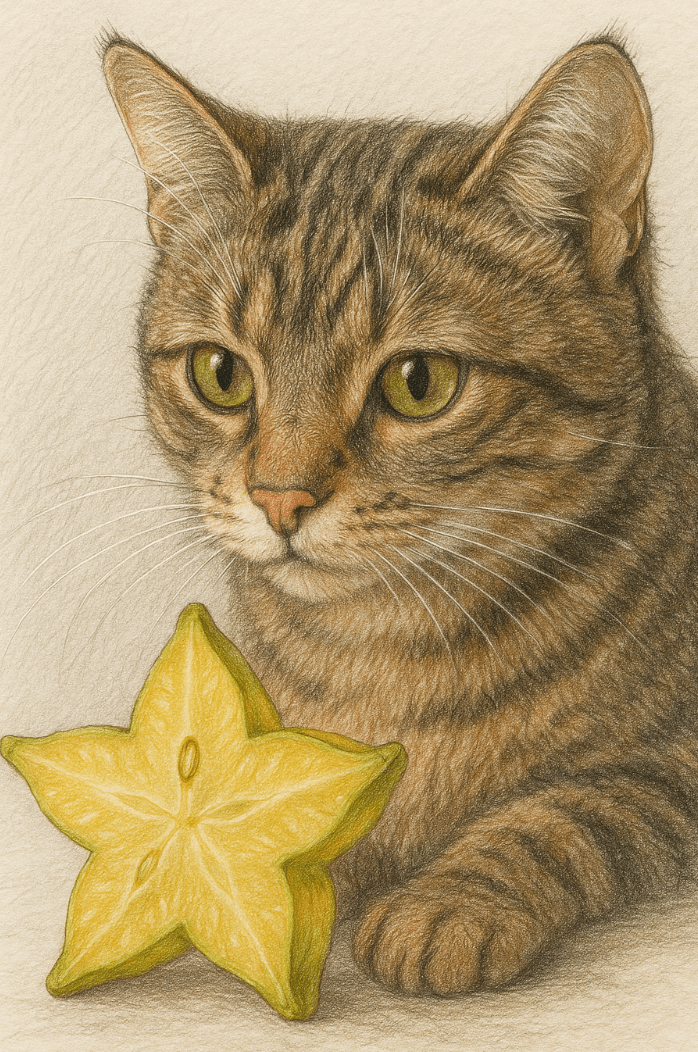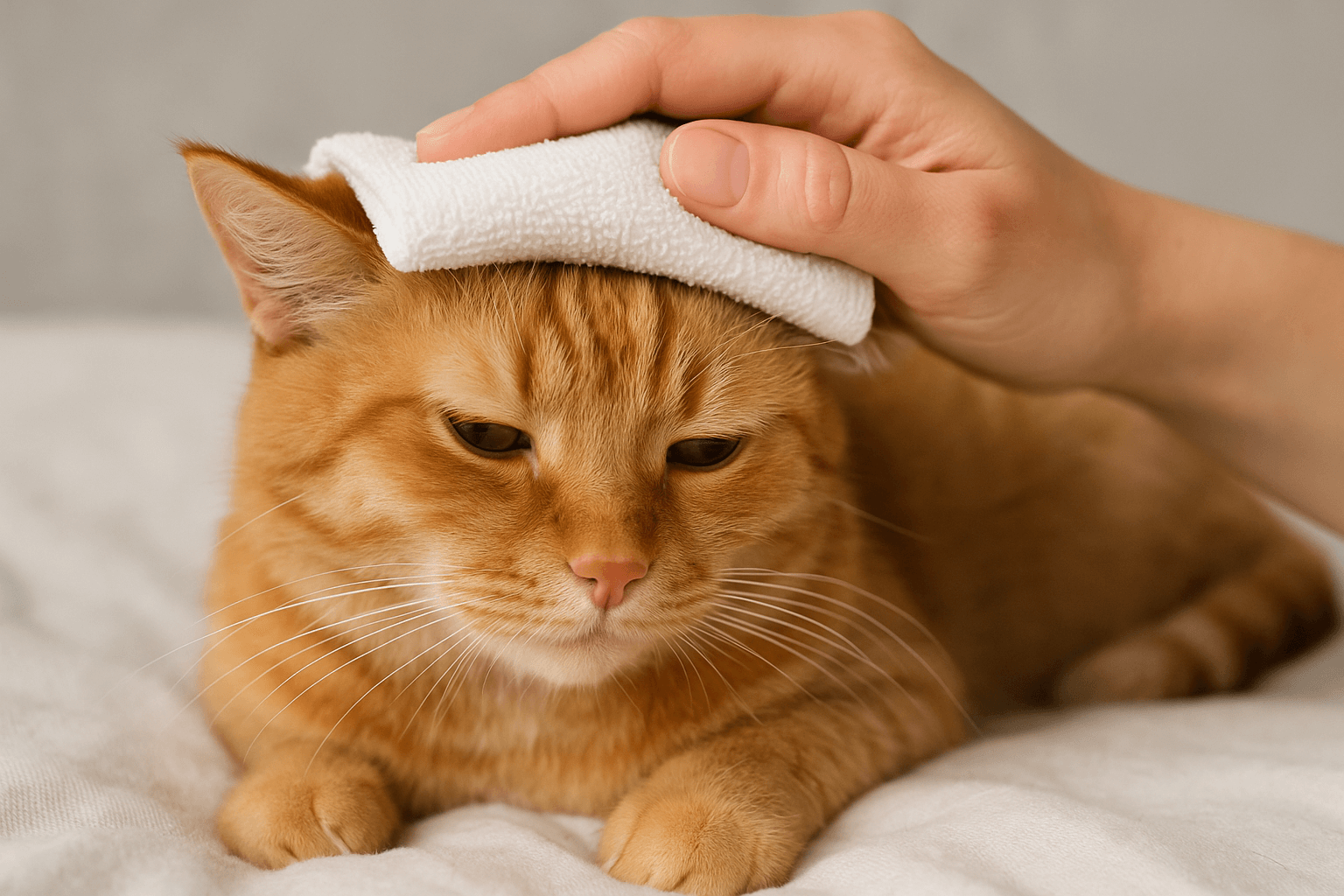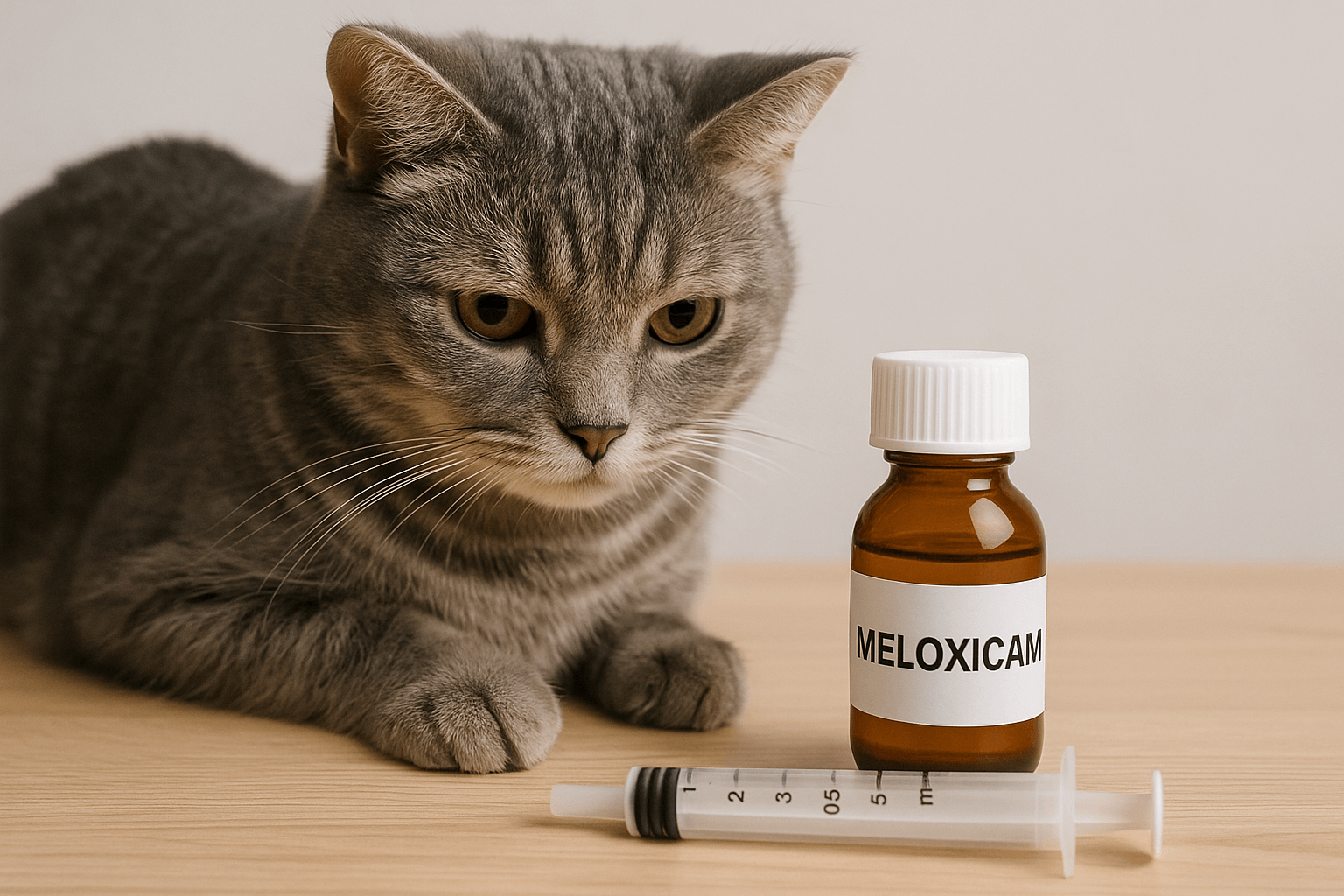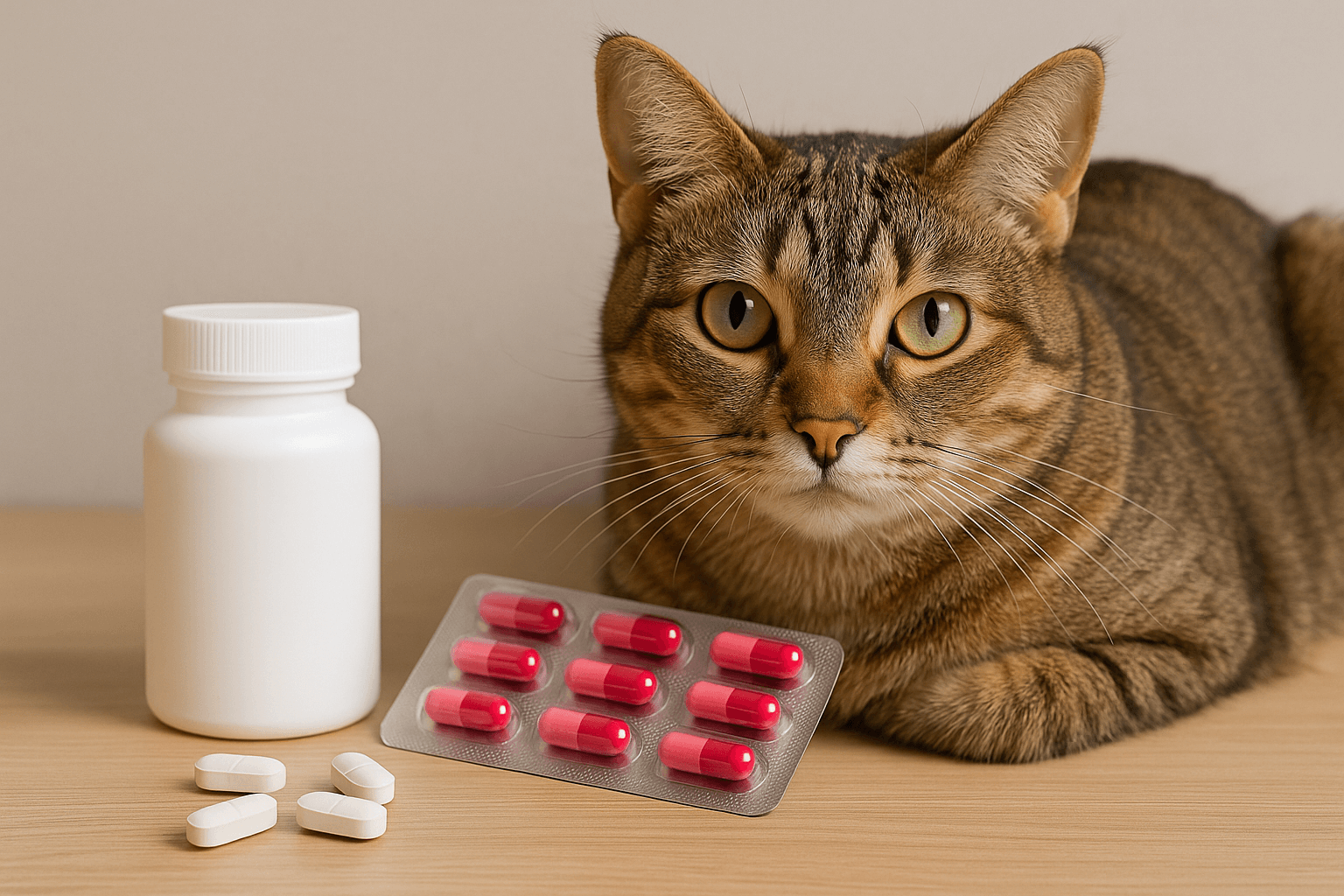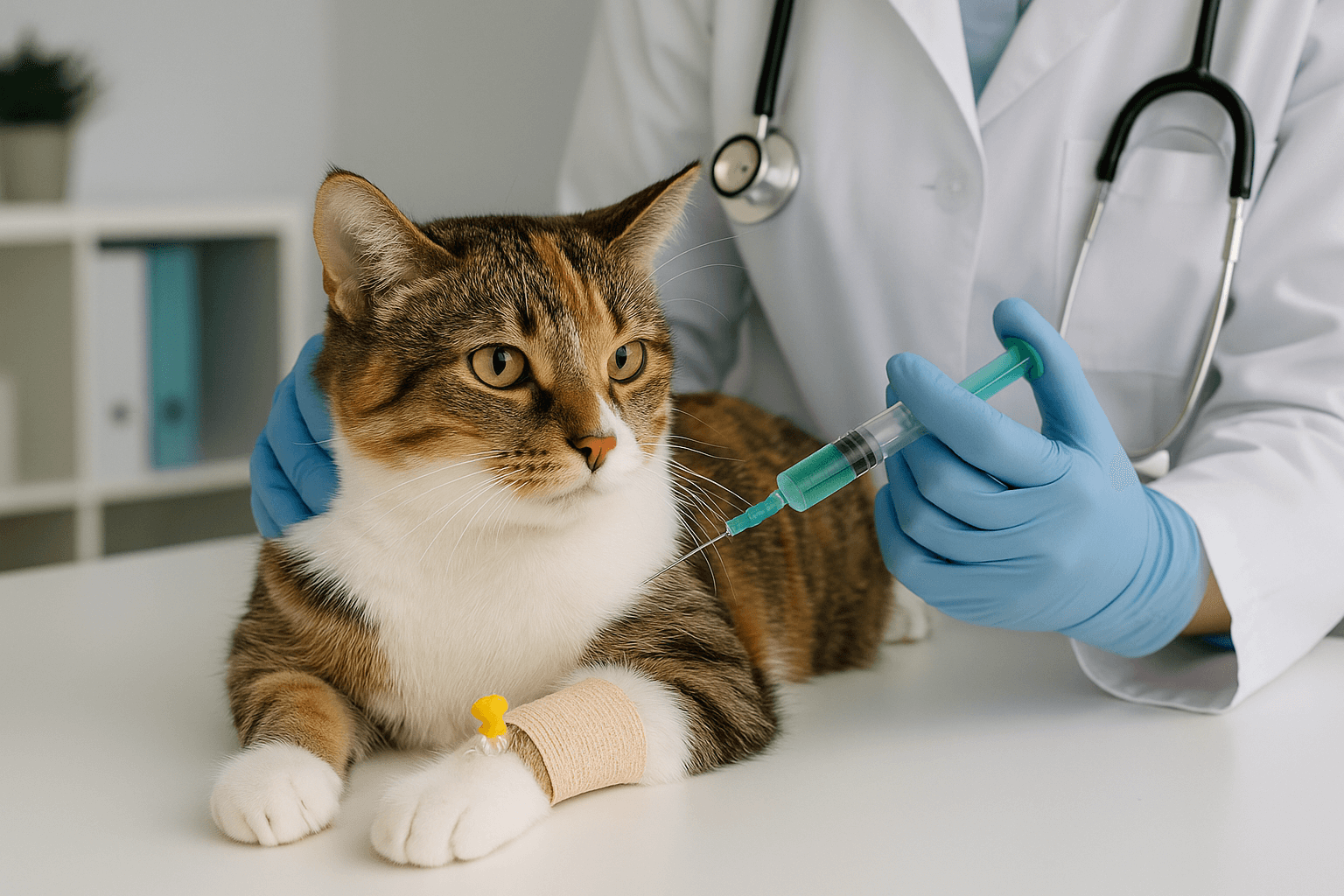Can Cats Eat Star Fruit?
Star fruit, with its unique shape and tangy-sweet flavor, is a favorite among fruit lovers. However, when it comes to sharing this exotic treat with your feline friend, caution is essential. While cats are naturally curious and may show interest in new foods, not everything that’s safe for humans is safe for them. Star fruit contains compounds that can pose serious risks to cats if ingested. In this blog post, we’ll explore whether cats can eat star fruit, the potential dangers, safer alternatives, and how to keep your furry companion healthy and happy. Understanding what foods are safe for your cat ensures their well-being and strengthens the bond you share.
Why Star Fruit Can Be Dangerous for Cats
While star fruit may seem like a harmless snack, it contains substances that can be toxic to cats. Here’s why this fruit should be avoided when feeding your pet.
Oxalates Content:
Star fruit contains oxalates, which can lead to kidney damage or urinary tract issues in cats if consumed in large quantities.Neurotoxic Effects:
Certain compounds in star fruit can act as neurotoxins, potentially causing symptoms like tremors, weakness, or even seizures in cats.High Sugar Levels:
The natural sugars in star fruit can upset a cat’s digestive system, leading to vomiting, diarrhea, or lethargy.Kidney Sensitivity:
Cats have delicate kidneys, and consuming star fruit may exacerbate pre-existing conditions or cause acute kidney stress.Choking Hazard:
The firm texture of star fruit slices can pose a choking risk, especially for smaller or more aggressive eaters.
Given these risks, it’s best to avoid giving star fruit to your cat altogether to ensure their safety and health.
Signs Your Cat May Have Eaten Star Fruit
If your cat accidentally consumes star fruit, it’s important to recognize the warning signs early. These symptoms indicate potential toxicity and require immediate attention.
Vomiting or Diarrhea:
Gastrointestinal upset is often one of the first signs that your cat has eaten something harmful.Lethargy or Weakness:
A sudden lack of energy or difficulty moving may signal poisoning or organ stress.Tremors or Seizures:
Neurological symptoms like shaking or convulsions are serious red flags requiring urgent veterinary care.Excessive Drooling:
Increased salivation can indicate nausea or irritation caused by toxins in the fruit.Loss of Appetite:
Refusal to eat or drink is a common sign of illness in cats after ingesting something toxic.
If you notice any of these symptoms, contact your veterinarian immediately to prevent further complications.
Check this guide 👉Can Cats Eat Vitamin D? Best 7 Expert Tips!
Check this guide 👉Can Cats Eat Gerbera Daisies? Best 7 Expert Tips!
Check this guide 👉Can Cats Eat Avocado Skin? Best 7 Expert Tips!
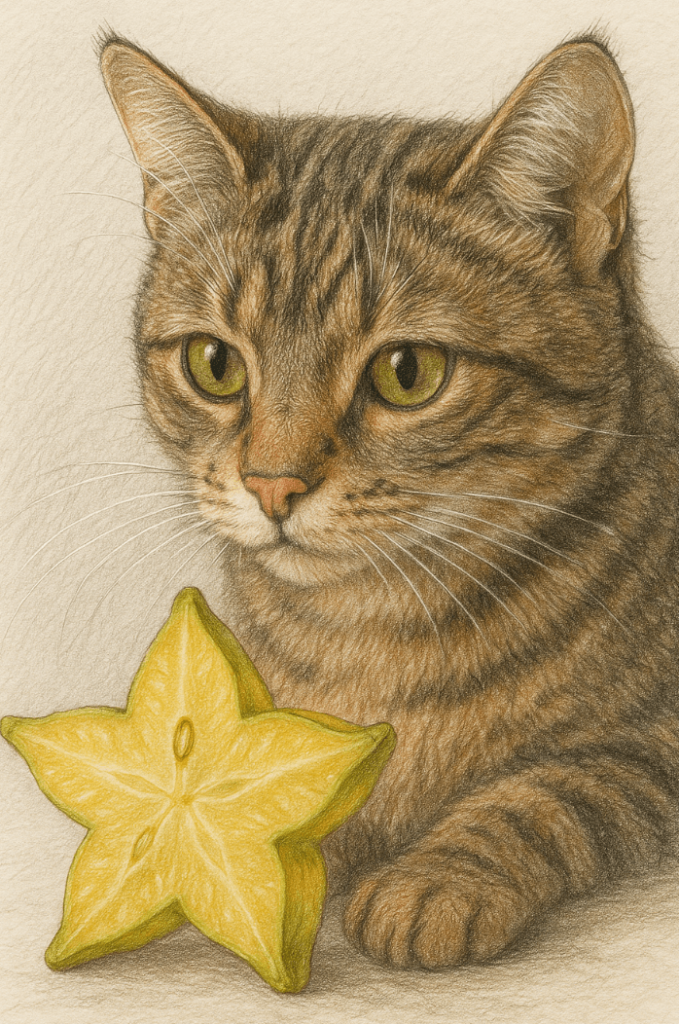
Safe Fruits for Cats | Foods to Avoid Feeding Cats |
|---|---|
Blueberries | Star fruit |
Watermelon (seedless) | Grapes and raisins |
Apples (without seeds) | Onions and garlic |
Bananas (in small amounts) | Chocolate |
Strawberries | Alcohol |
How to Safely Introduce New Foods to Your Cat
If you’re curious about expanding your cat’s diet, it’s important to do so safely and responsibly. Follow these guidelines to minimize risks.
Consult Your Veterinarian First:
Always check with your vet before introducing any new food, especially fruits or human snacks.Start with Small Portions:
Offer tiny amounts of a new food to monitor your cat’s reaction and avoid overwhelming their system.Avoid Toxic Ingredients:
Steer clear of foods known to be toxic to cats, such as onions, garlic, and anything containing xylitol.Observe for Allergic Reactions:
Watch for signs of allergies, such as itching, swelling, or digestive issues, after introducing a new food.Stick to Cat-Friendly Options:
Prioritize foods specifically recommended for cats, ensuring they meet their nutritional needs.
By following these steps, you can safely explore new flavors while keeping your cat healthy and happy.
Healthier Alternatives to Star Fruit for Cats
If you want to treat your cat to something fruity or refreshing, there are plenty of safer options available. These alternatives provide flavor without the risks associated with star fruit.
Blueberries:
Rich in antioxidants, blueberries make a nutritious and tasty snack for cats in moderation.Seedless Watermelon:
This hydrating fruit is a great way to refresh your cat on a hot day—just remove the seeds and rind.Apples (Without Seeds):
Apples are a good source of fiber and vitamin C, but always remove the seeds and core before serving.Strawberries:
High in vitamin C and fiber, strawberries can be an occasional treat for your feline friend.Bananas (Small Portions):
While high in sugar, bananas can be given sparingly as a sweet and creamy snack.
These alternatives allow you to indulge your cat’s curiosity without compromising their health.
Common Mistakes to Avoid When Feeding Cats Human Food
Feeding your cat human food can be risky if done improperly. Avoid these common mistakes to protect your cat’s health.
Assuming All Fruits Are Safe:
Not all fruits are cat-friendly; some, like grapes and star fruit, can be toxic.Ignoring Portion Sizes:
Even safe foods can cause issues if given in large quantities, leading to obesity or digestive problems.Overlooking Hidden Toxins:
Ingredients like xylitol, caffeine, or alcohol can be deadly to cats, even in small amounts.Neglecting Allergies:
Cats can develop allergies to certain foods, so always monitor their reactions closely.Skipping Veterinary Advice:
Consulting your vet before introducing new foods ensures your cat’s safety and well-being.
Avoiding these pitfalls helps you make smarter and safer dietary decisions for your cat.
Understanding Your Cat’s Nutritional Needs
Cats have specific dietary requirements that differ significantly from humans. Understanding these needs ensures you provide a balanced diet.
High Protein Requirements:
Cats are obligate carnivores, meaning their diet should primarily consist of animal-based proteins.Limited Need for Carbohydrates:
Unlike humans, cats don’t require large amounts of carbs, which can lead to weight gain if overfed.Essential Vitamins and Minerals:
Taurine, vitamin A, and arachidonic acid are crucial nutrients that must be included in a cat’s diet.Hydration Is Key:
Cats often don’t drink enough water, so incorporating wet food or hydrating snacks can help.Avoid Overfeeding Treats:
Treats should make up no more than 10% of your cat’s daily caloric intake to maintain a healthy weight.
Meeting these nutritional needs supports your cat’s overall health and longevity.
Fun Ways to Treat Your Cat Without Risking Their Health
Spoiling your cat doesn’t have to involve risky foods. These creative ideas allow you to pamper your pet safely and responsibly.
Cat-Specific Treats:
Choose treats formulated for cats, which are designed to be both safe and delicious.DIY Catnip Toys:
Stuff homemade toys with catnip for a fun and engaging experience.Interactive Playtime:
Use feather wands or laser pointers to provide mental and physical stimulation instead of food rewards.Freeze-Dried Meat Snacks:
Freeze-dried chicken or salmon offers a protein-rich alternative to human foods.Puzzle Feeders:
Hide kibble or treats in puzzle feeders to encourage problem-solving and slow eating.
These activities and treats ensure your cat feels loved without compromising their health.
Frequently Asked Questions About Cats and Star Fruit
Is star fruit toxic to cats?
Yes, star fruit contains compounds that can be toxic to cats, particularly affecting their kidneys and nervous system.
What should I do if my cat eats star fruit?
Contact your veterinarian immediately, especially if you notice symptoms like vomiting, lethargy, or tremors.
Can cats eat other tropical fruits?
Some tropical fruits, like mango or papaya, may be safe in small amounts, but always consult your vet first.
Are there any benefits to feeding fruit to cats?
While cats don’t need fruit in their diet, some fruits can provide vitamins and hydration in moderation.
How can I prevent my cat from eating unsafe foods?
Keep harmful foods out of reach, supervise your cat during meal prep, and educate family members about safe feeding practices.
Prioritizing Your Cat’s Health When It Comes to Food Choices
While it’s tempting to share your favorite snacks with your cat, their dietary needs are vastly different from ours. Star fruit, though delicious for humans, poses significant risks to cats and should be avoided entirely. By understanding what foods are safe and consulting your veterinarian, you can ensure your cat stays healthy and happy. Remember, your feline companion relies on you to make the best dietary choices for them—so always prioritize their well-being above all else. With the right knowledge and precautions, you can provide a balanced and enjoyable diet that keeps your cat purring for years to come.
Cat Fever Treatment: Best 7 Expert Tips! Discover expert advice on identifying, managing, and treating fever in cats to ensure their quick recovery and well-being.
Understanding Meloxicam for Cats: Best 7 Expert Tips! Learn how to safely administer meloxicam, manage side effects, and ensure your cat's comfort with expert advice on feline pain relief.
Amoxicillin for Cat UTI: Best 7 Expert Tips! Discover safe usage, dosage guidelines, and expert advice on treating feline urinary tract infections effectively with amoxicillin.
Understanding Cat Cancer Treatment: Best 7 Expert Tips! Discover expert advice on managing feline cancer, from early detection to treatment options, ensuring your cat’s health and comfort.

